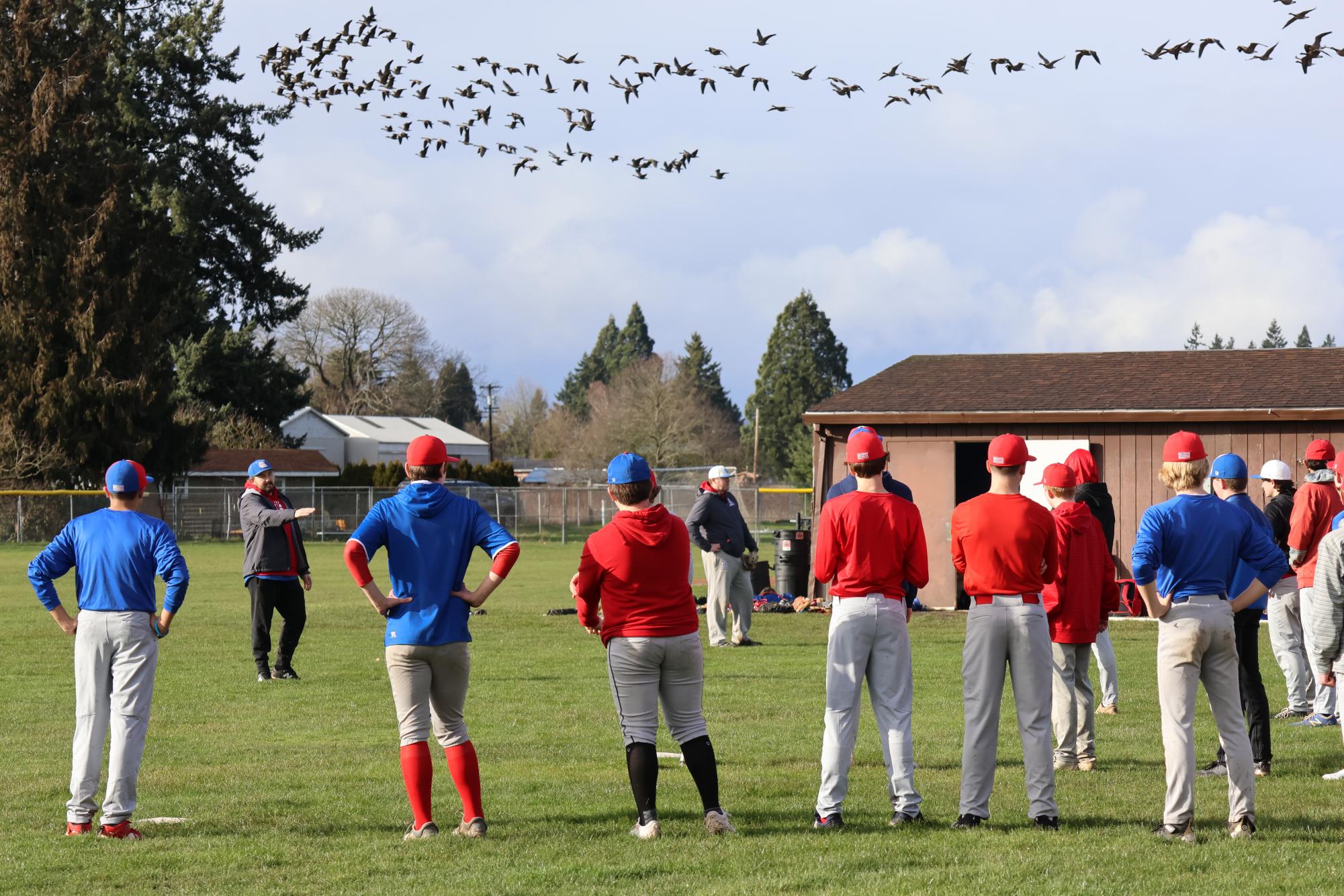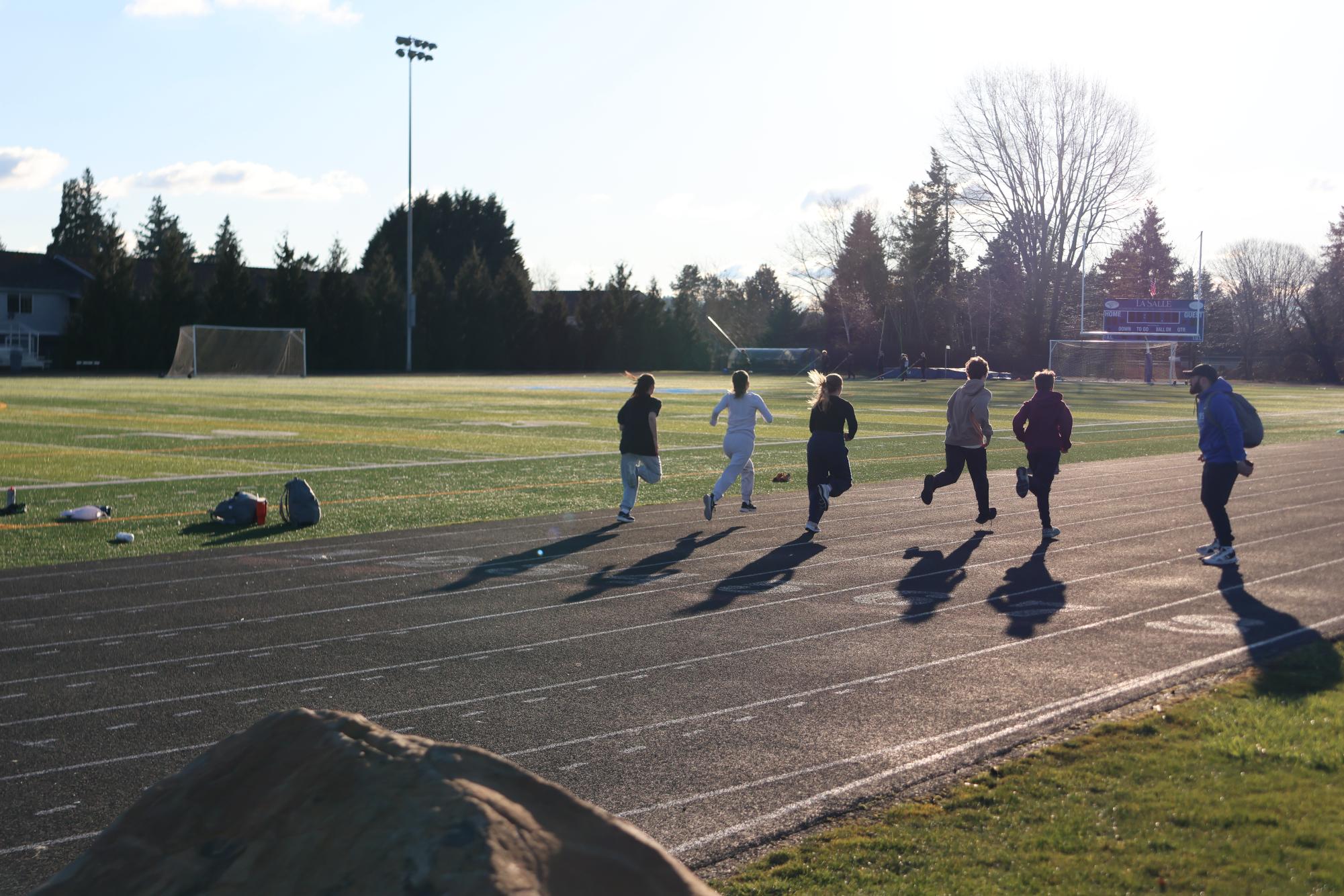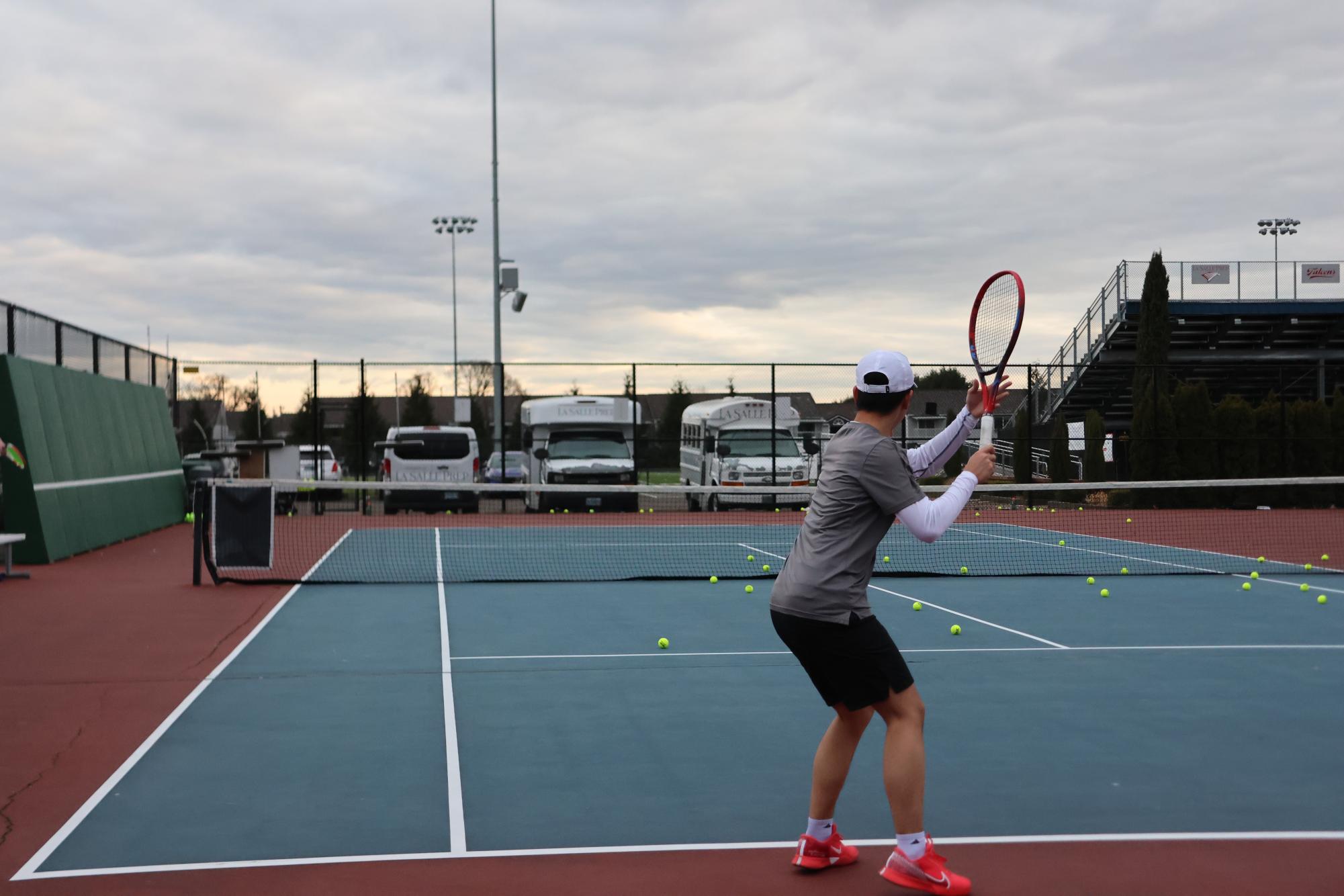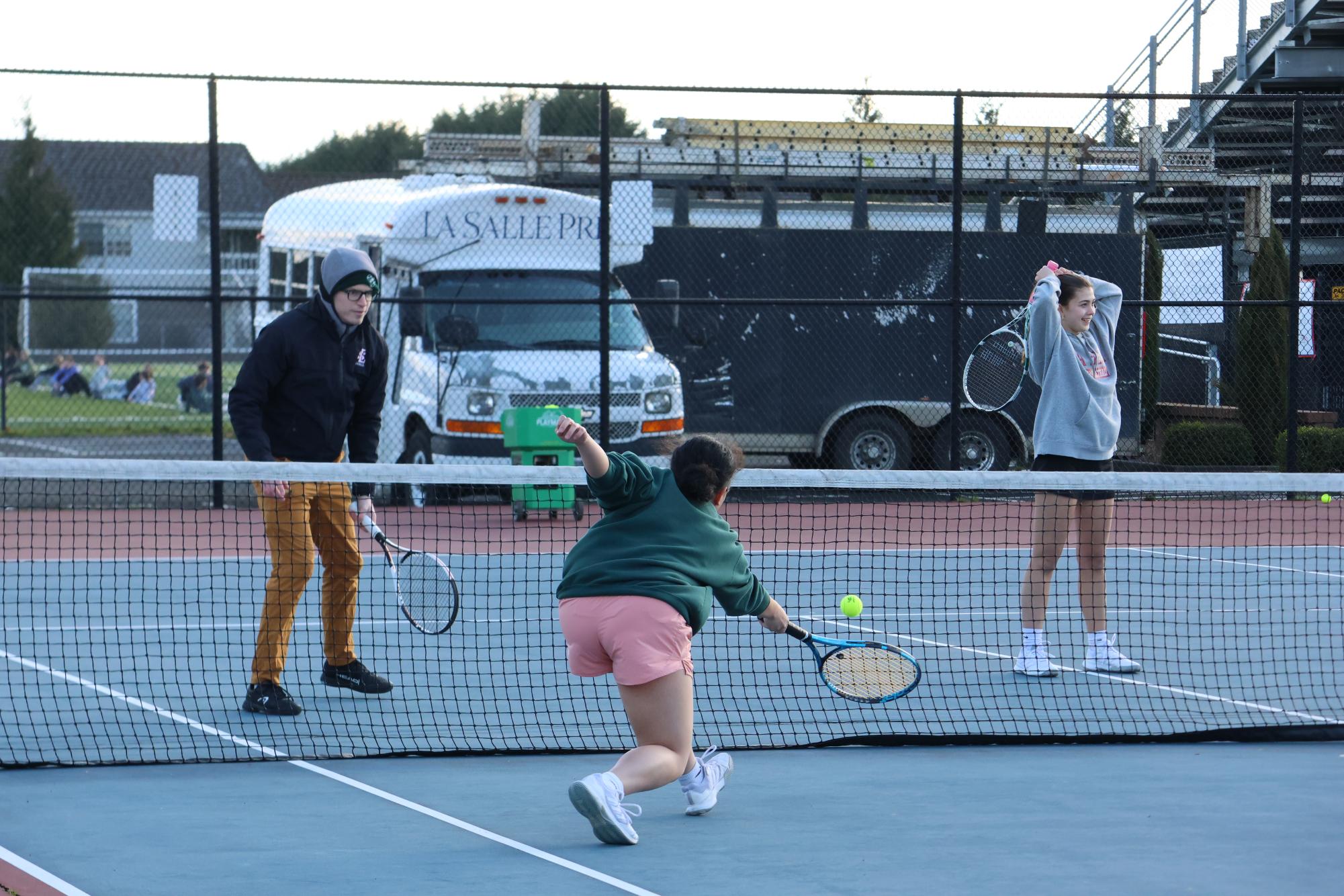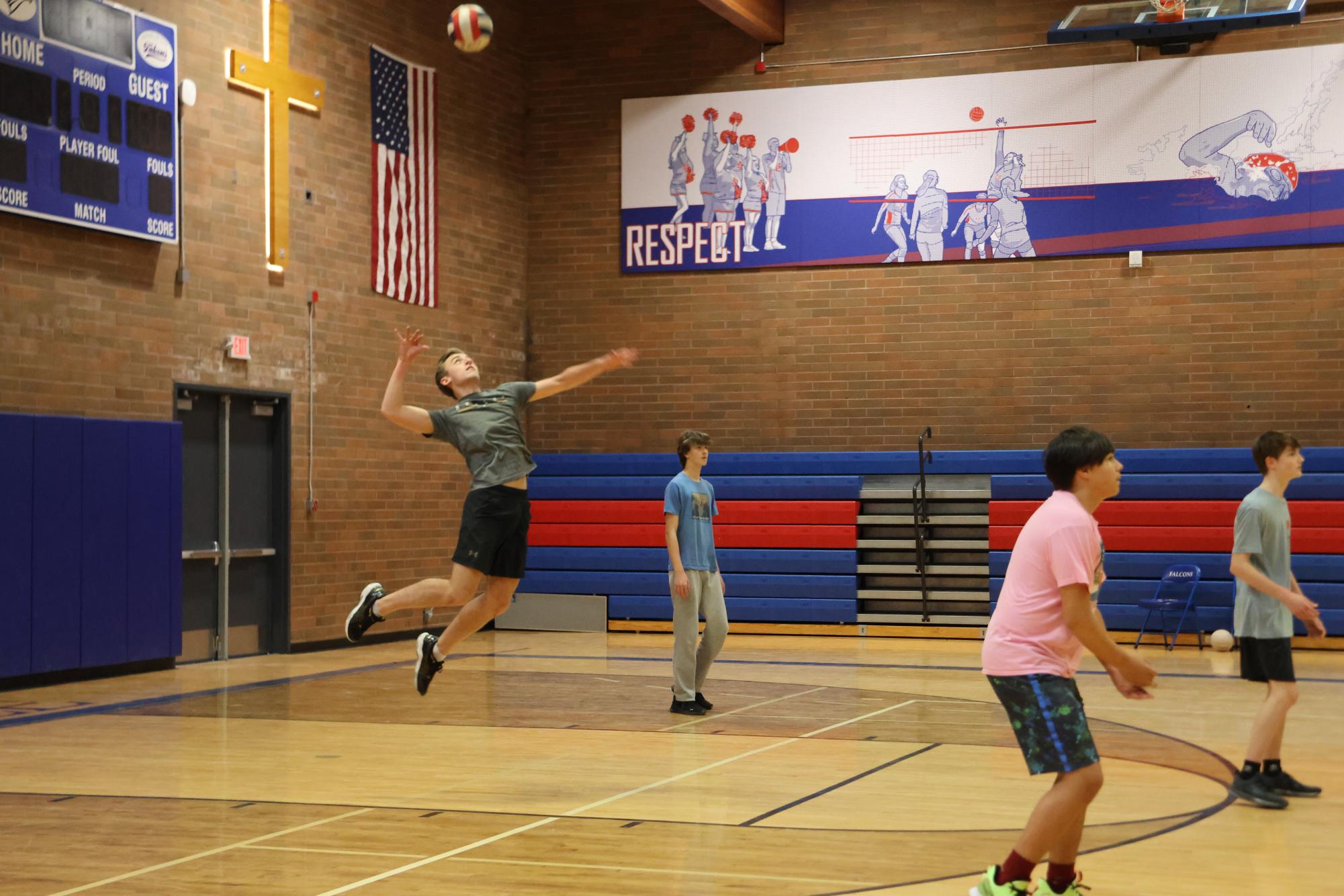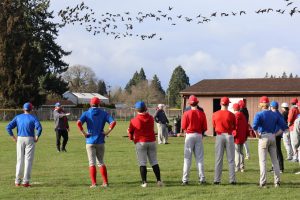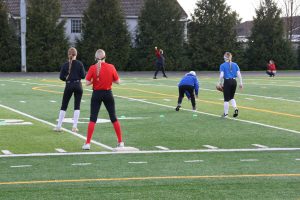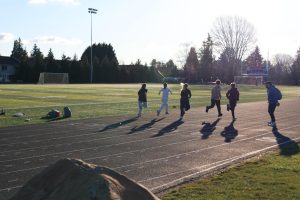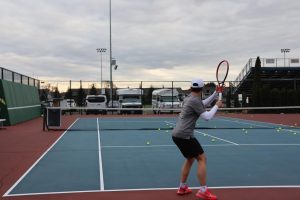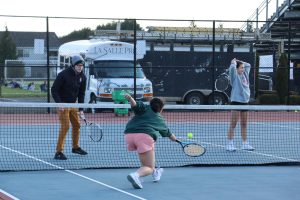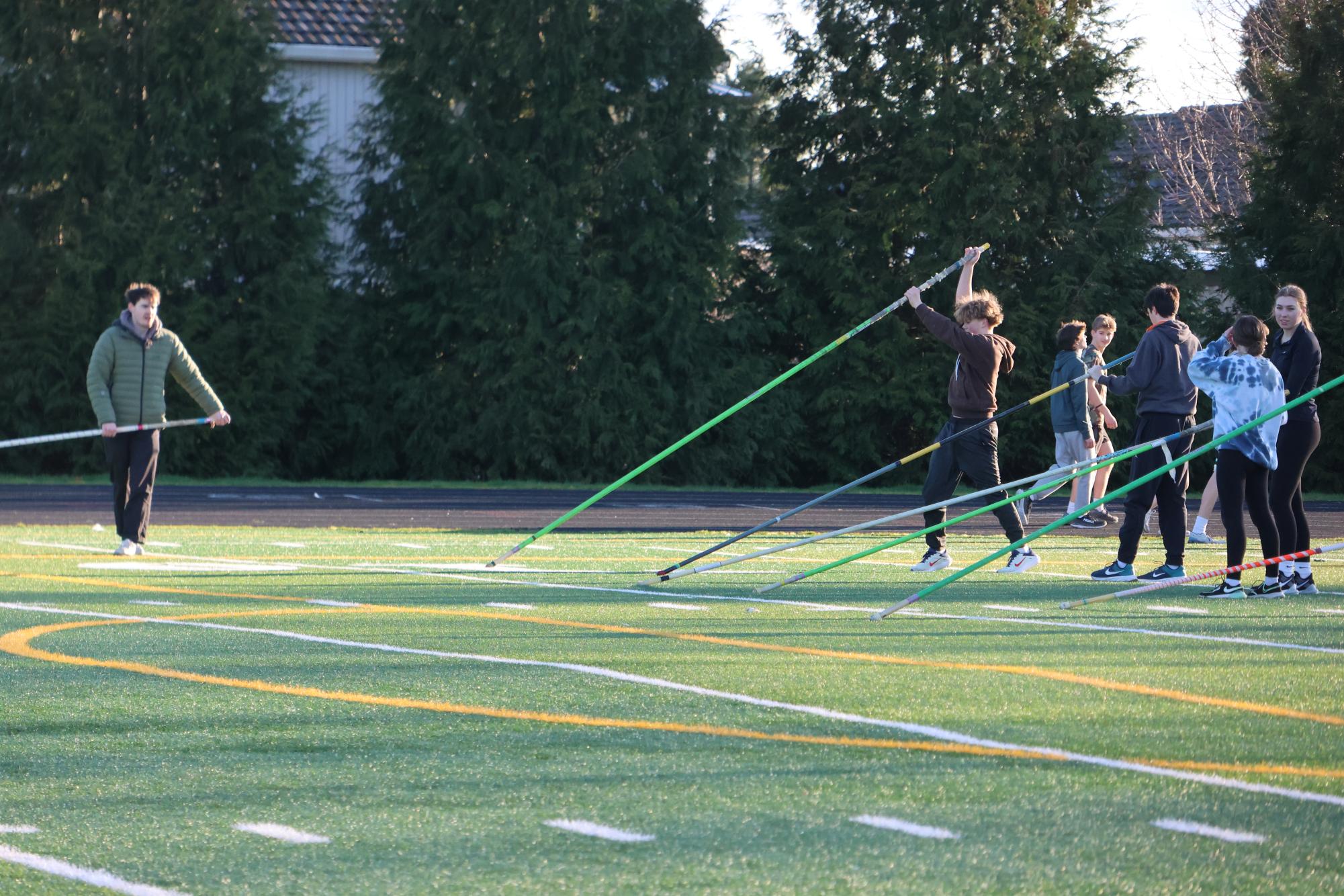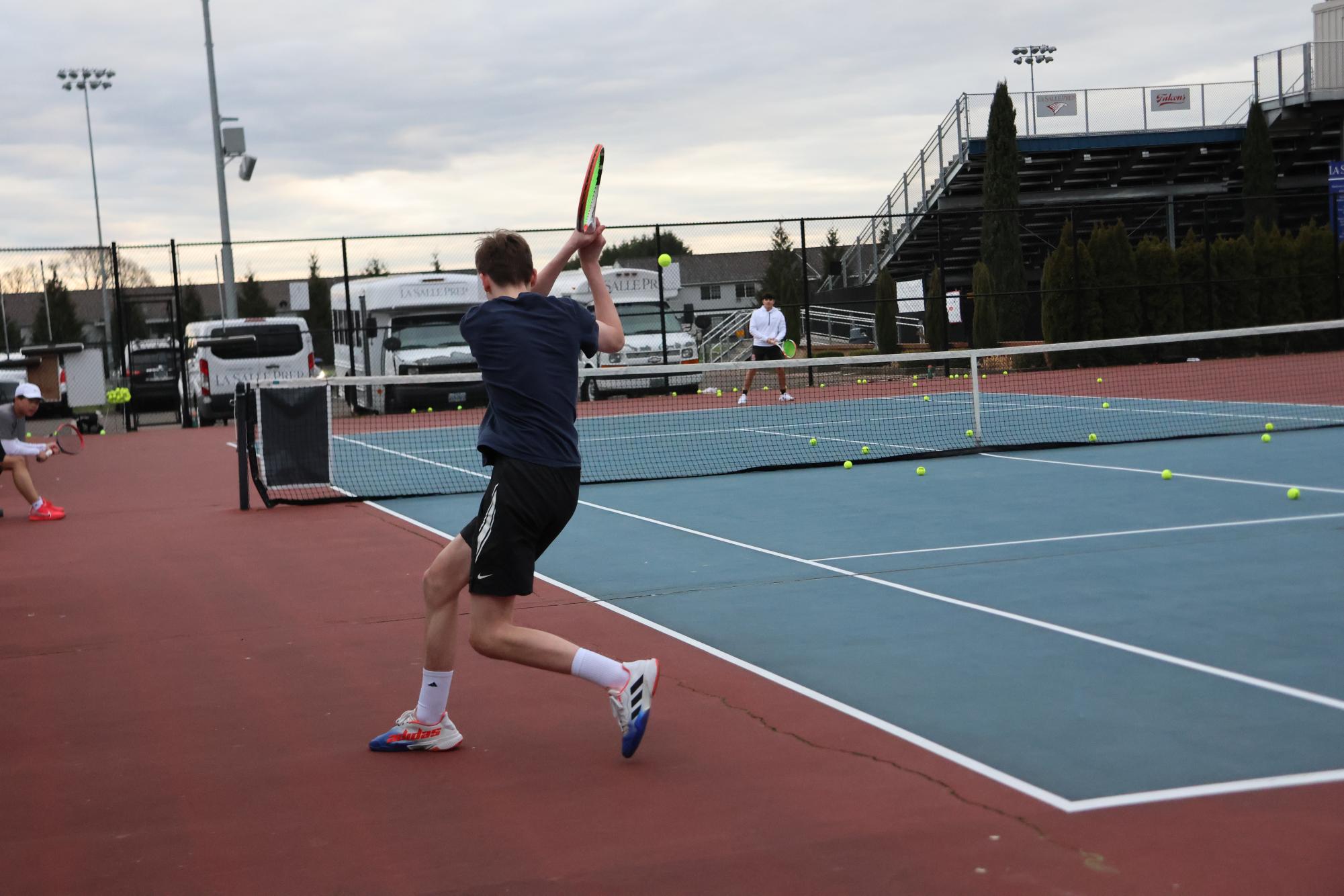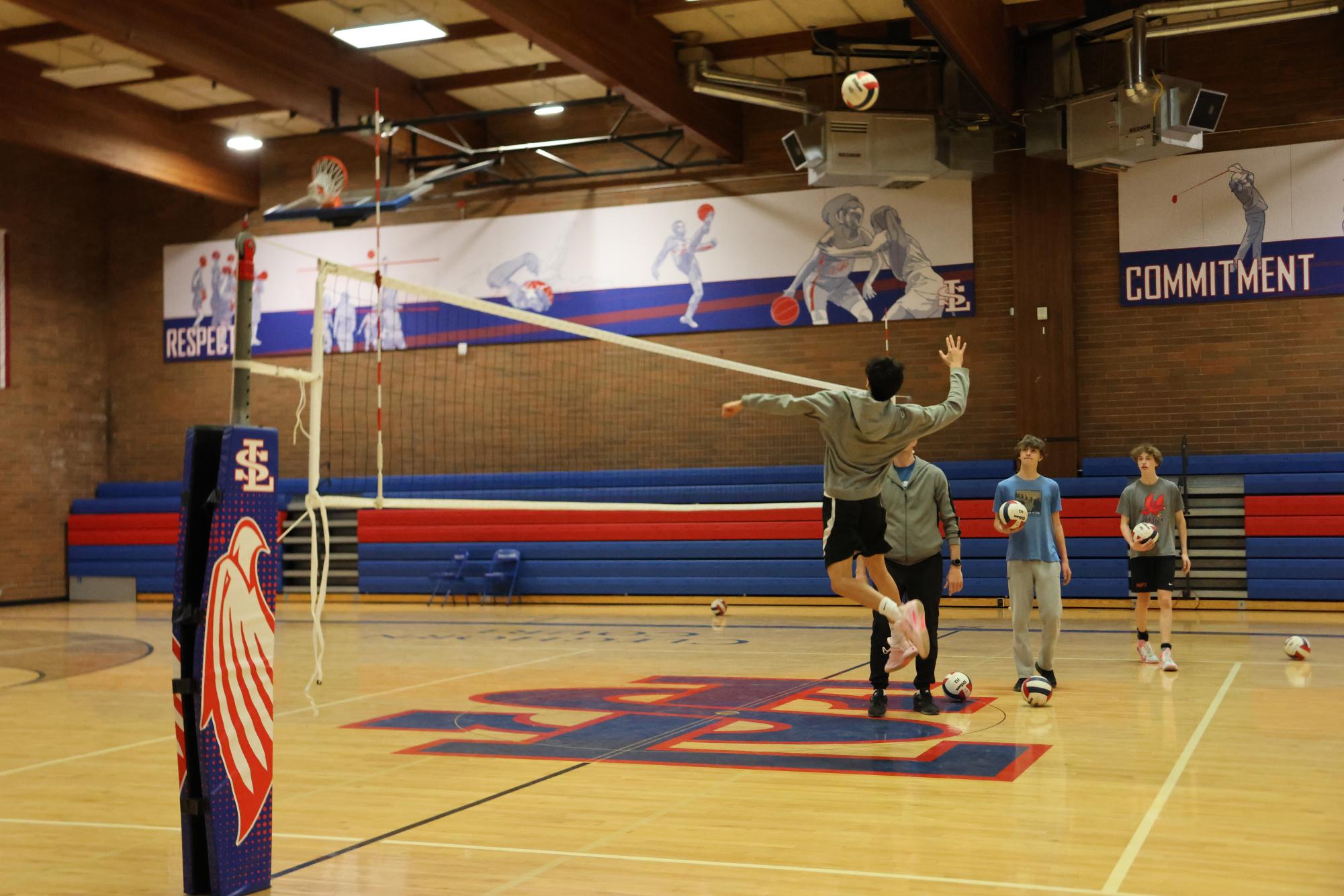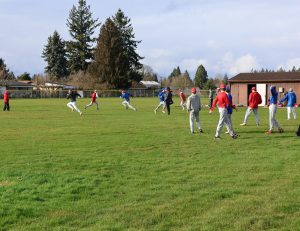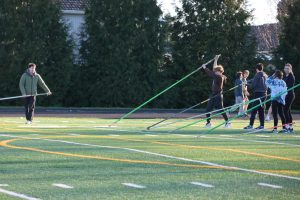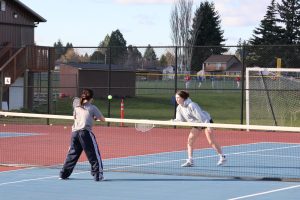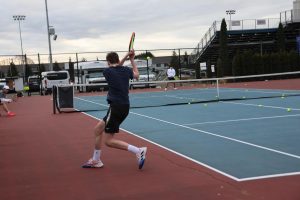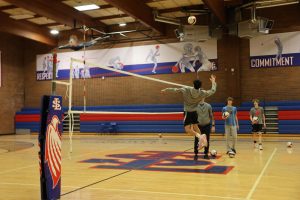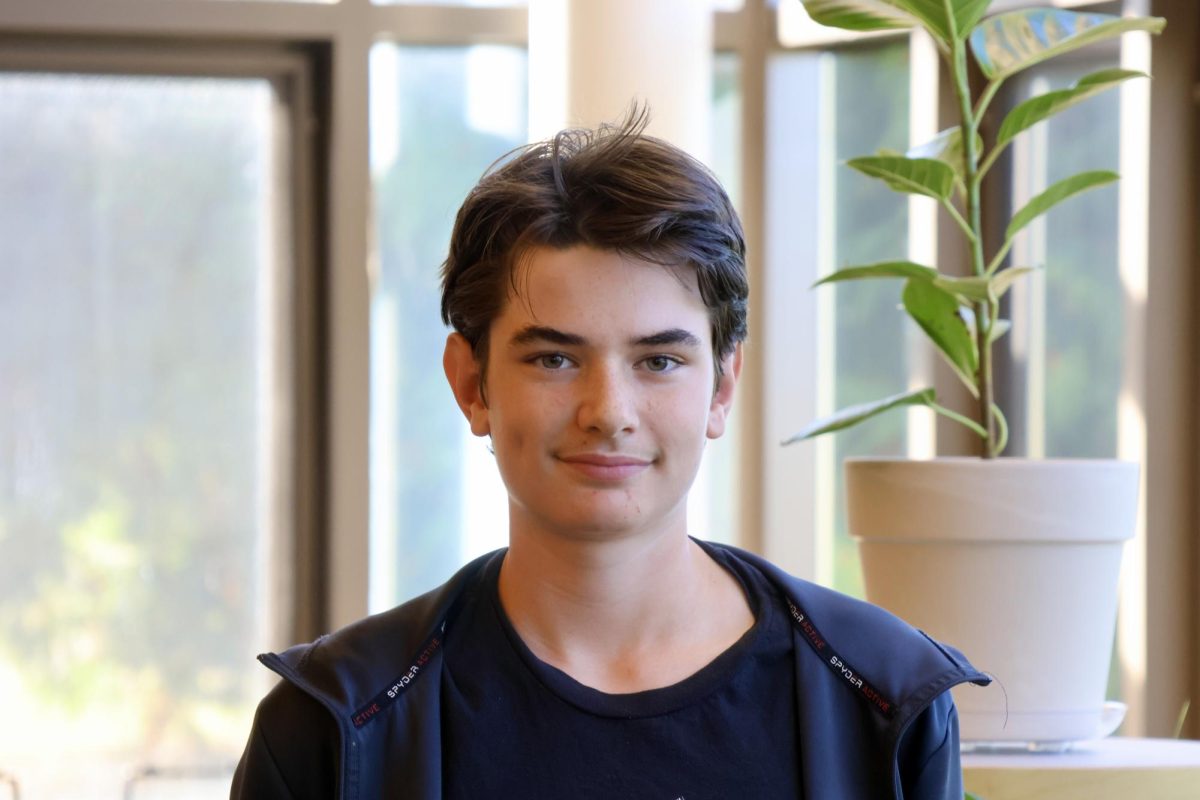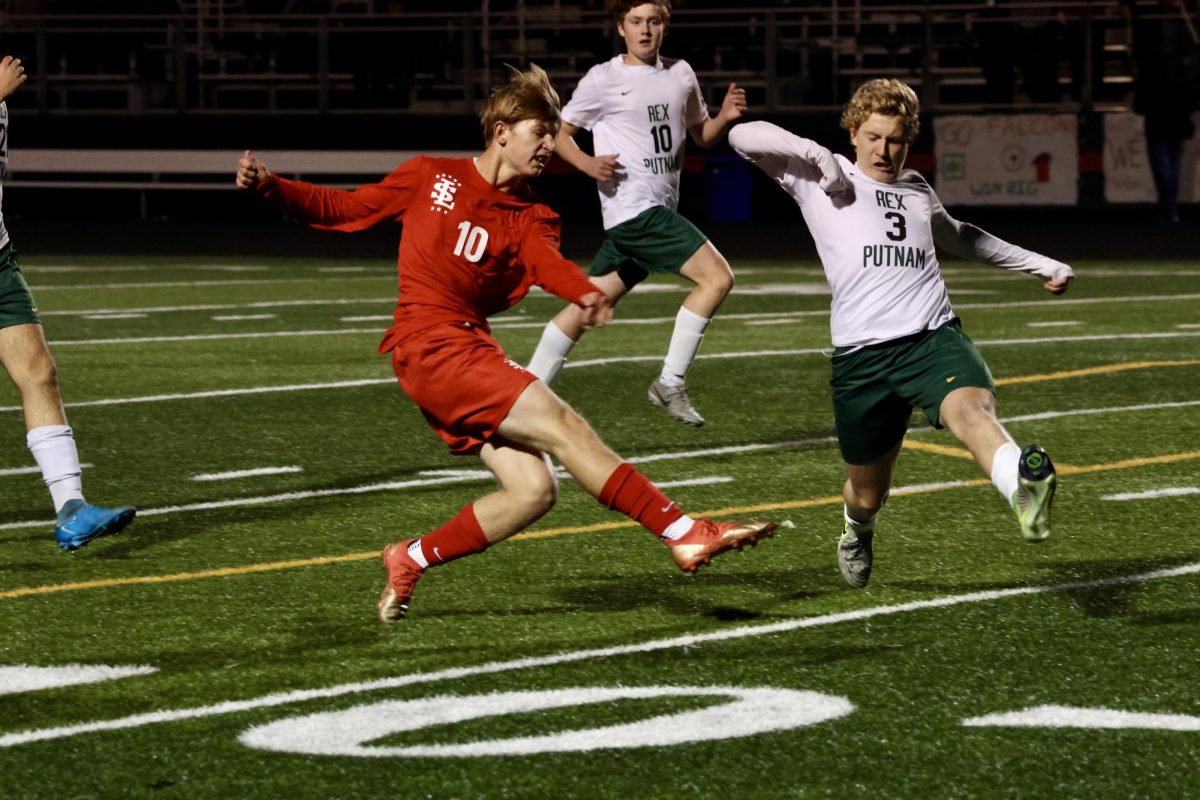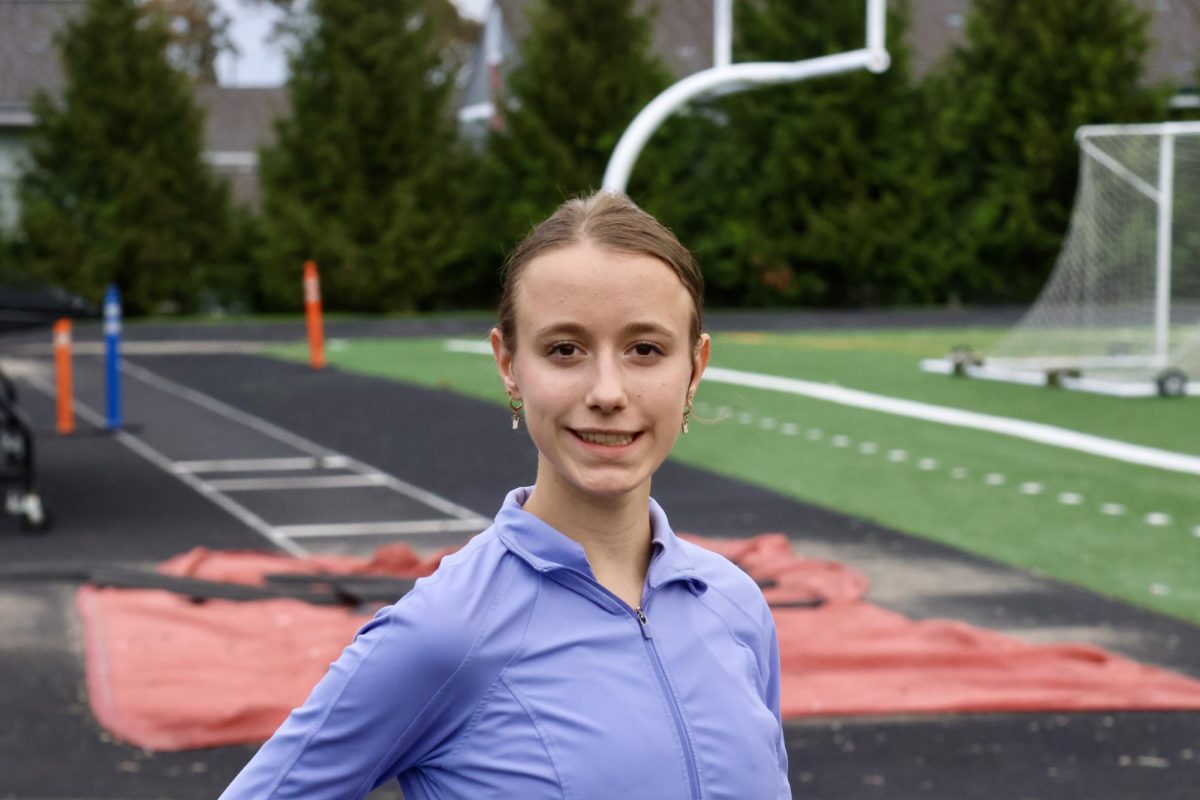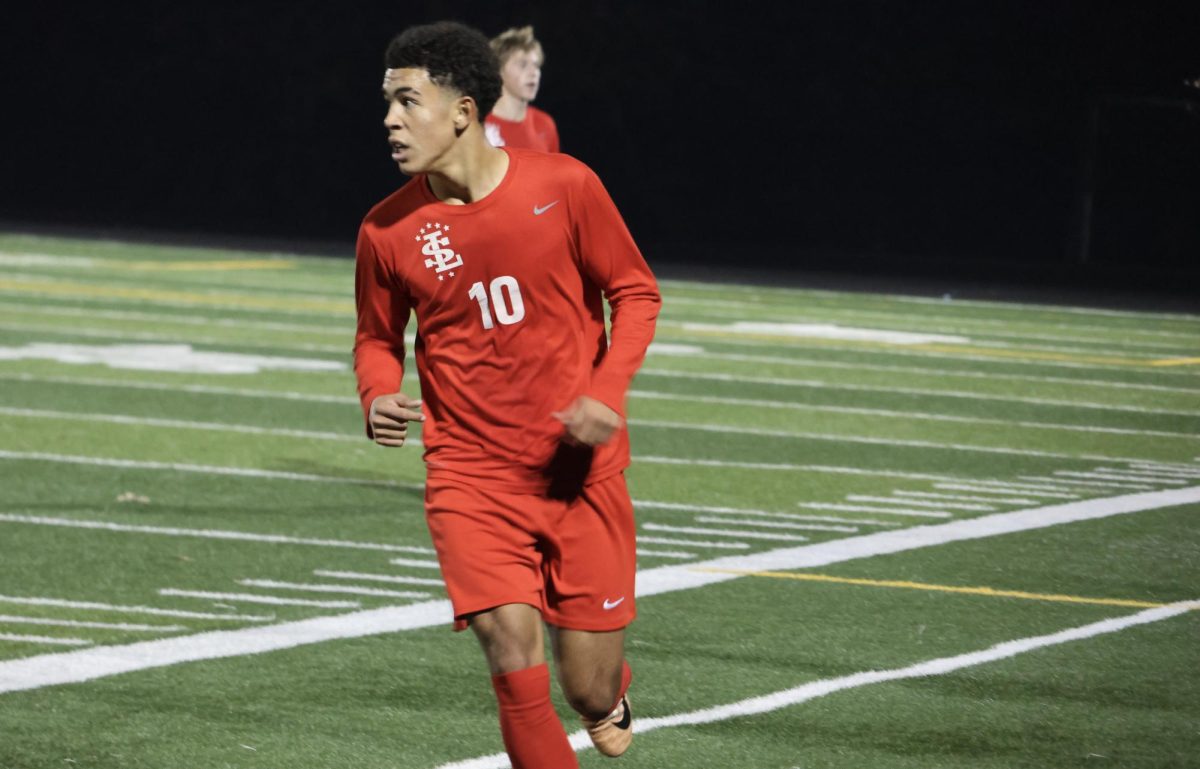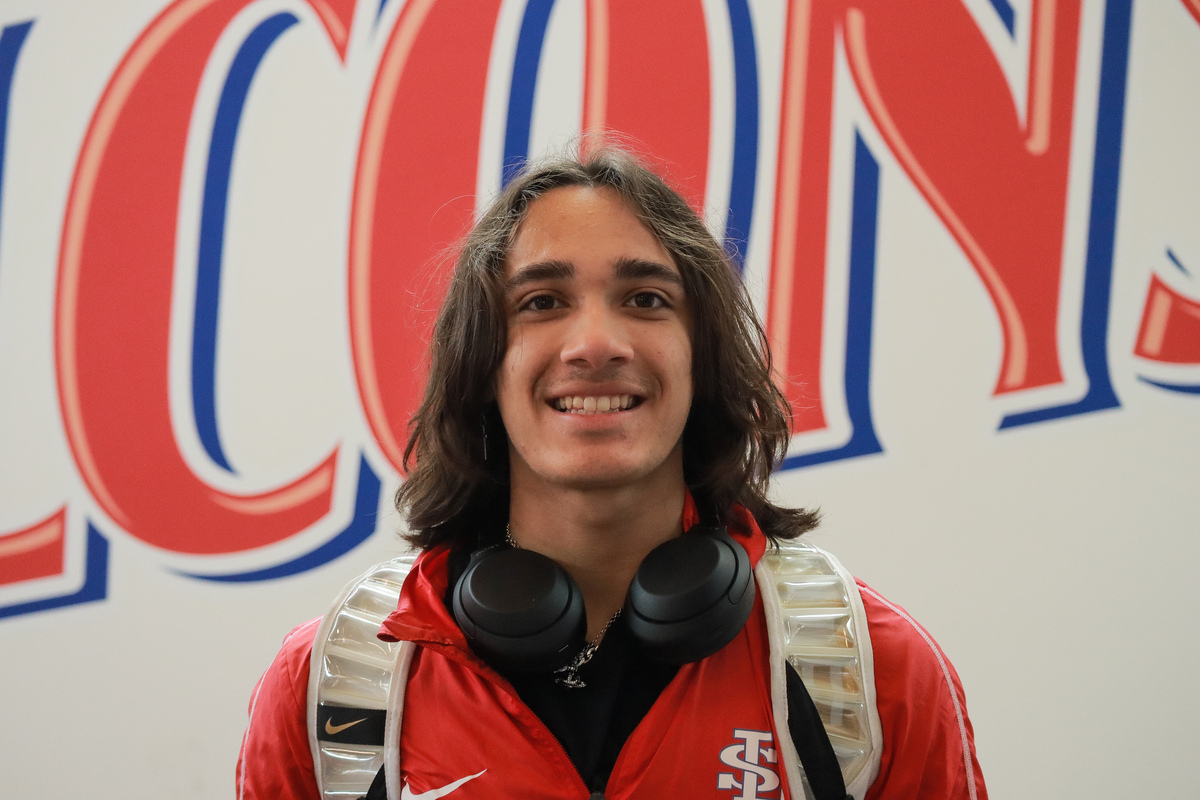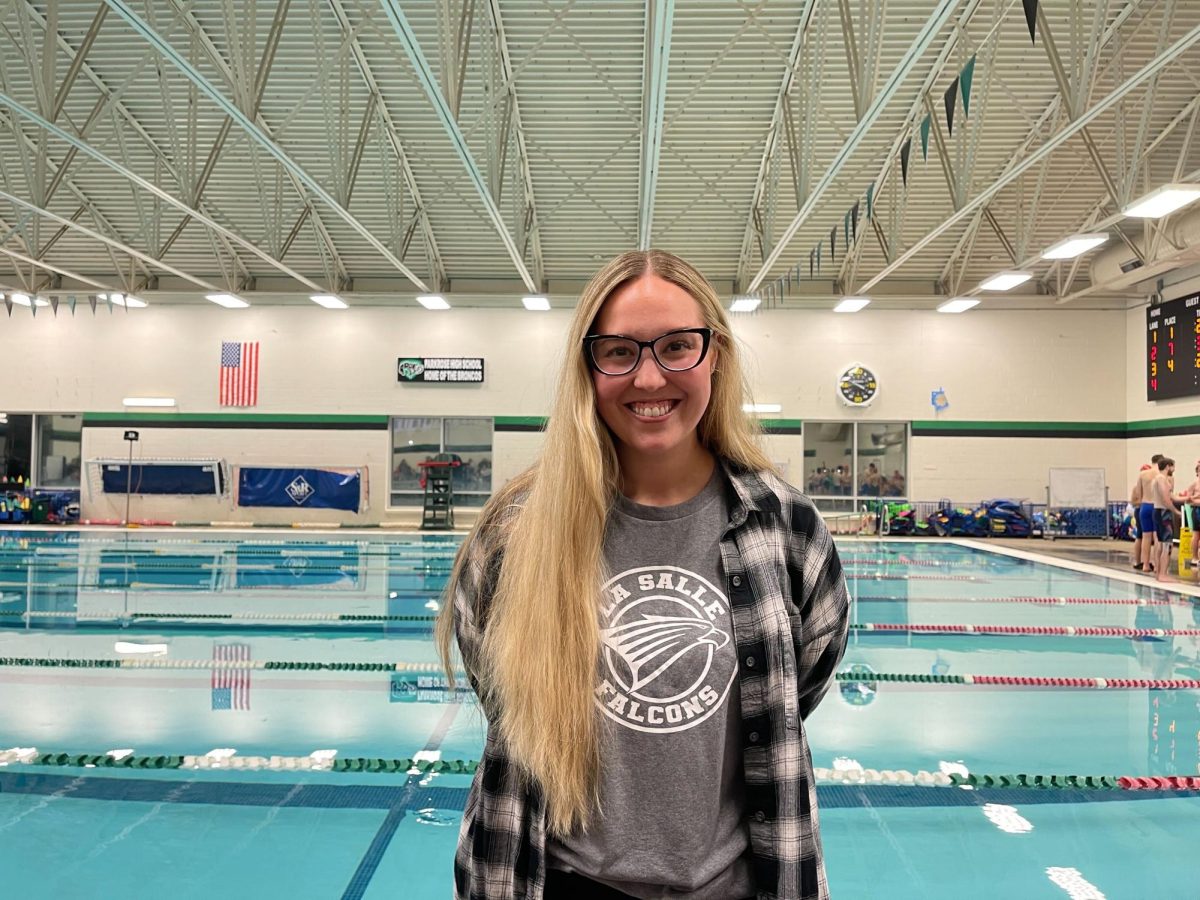As the start of the spring sports season begins, so does a period of “adjusting”, according to Athletic Director Mr. Chris George, as the softball, baseball, tennis, golf, and track and field teams adapt their schedules to the inclement weather conditions common in a typical Oregon February and March.
With practices roughly every day, and competitions for all of these sports — except newly established boys volleyball — beginning the week of March 11, Mr. George said it’s a “juggling act” to manage both practice time and the limited available gym space. Last week, the boys and girls basketball were both preparing for playoffs, and while baseball and softball could use their on-campus hitting facilities or turf if it rains, tennis was only able to hold after school meetings, as there weren’t other available dry areas for them to train.
“It’s hard,” Mr. George said. “You have to be creative as a coach, and highly flexible, and collaborative with other coaches to try to figure out what you can do, where you can do it, and [how you can] make it meaningful for kids.”
German teacher Mr. David Lane, the head coach for girls tennis, said that the tennis team was “rained out every single day” their first week of practice. For their practices, consistent downpours are equally difficult to shifting weather conditions. Often, he said, there is only a “five percent chance of rain, [but] then the second we step onto the courts, it just starts pouring.”
Campus Health & Safety Monitor, Mr. Mikel Rathman, the head coach for track and field, said that while the rainy months are most challenging for sports like softball, baseball, and tennis, the cold temperatures have a significant impact on track and field athletes as well. Their season runs from Feb. 26 to around May 18, when the state meet takes place, and although the skies often clear up, there have been years when winter weather lingers for almost the entire season.
“In track, you’re trying to be your optimum best,” Mr. Rathman said. According to him, that’s difficult to do when “it’s 33 degrees and raining and you don’t have proper rain gear.”
In addition to spring being what Mr. George called the most “challenging” season, in regards to managing the amount of teams needing the gym, another sport is joining this year: boys volleyball.
Interest in forming a team began last year, and through open gyms over the summer along with continued effort and conversation during the school year, La Salle is now one of the 76 schools with a boys volleyball team in their athletic program. Practices will begin on Mar. 6, running from the start of competitions in April to the end of the season around May 31, with the state tournament on June 1. According to Mr. George, it’s likely that many players will be two sport athletes, meaning that the new boys volleyball team will be a balancing act for both participants and the school, as they continue to consider the time and room spring sports need to practice in the rainier months.
“Every school is kind of in the same boat,” Mr. George said. “We’re all trying to grow the sport and get it going in school, but it comes with facility challenges, too.”
While these challenges include the potential start of open gyms for both basketball and girls volleyball in six weeks, Mr. George said that he wants to “make boys volleyball more of a priority”, which equates to ensuring they have time in the gym and lengthening the list of teams needing the space this spring.
The difficulties that come with navigating spring in the Pacific Northwest push students and staff, but they also provide opportunities to build community within teams, according to Mr. Rathman.
“Particularly with track and field, you have no idea what that person might be going through [in their event],” Mr. Rathman said. “You might be a thrower, but all of a sudden you see a distance runner run by and you see how hard they’re working, and you just start cheering them on.”
Considering the amount of energy spent by both staff and students coordinating and participating in spring sports, combined with the fact that historically they are not well attended, Mr. George said that it would be cool for “our school community, our teachers and friends, our student athletes’ peers… to look for ways for where they can come [and] support their peers.”
Mr. George said that when students find a competition to attend it matters to the athletes and shows a sense of community.
Despite the hurdles of the spring season, Mr. Lane said that one of the best parts of it is watching the players grow and develop their skills. With away tournaments against extremely good 6A teams, it can be “tough,” but he said that their goal is to win districts and take home the first state title for girls tennis at La Salle since 1982.
“We have an amazing group of coaches, an amazing group of girls,” Mr. Lane said. “We’d love for the girls to get tons of support for these home matches because they just worked really hard.”
The team’s schedules can all be found on the OSAA website, though Mr. George said that they are still being tweaked due to the many “moving parts” involved.


